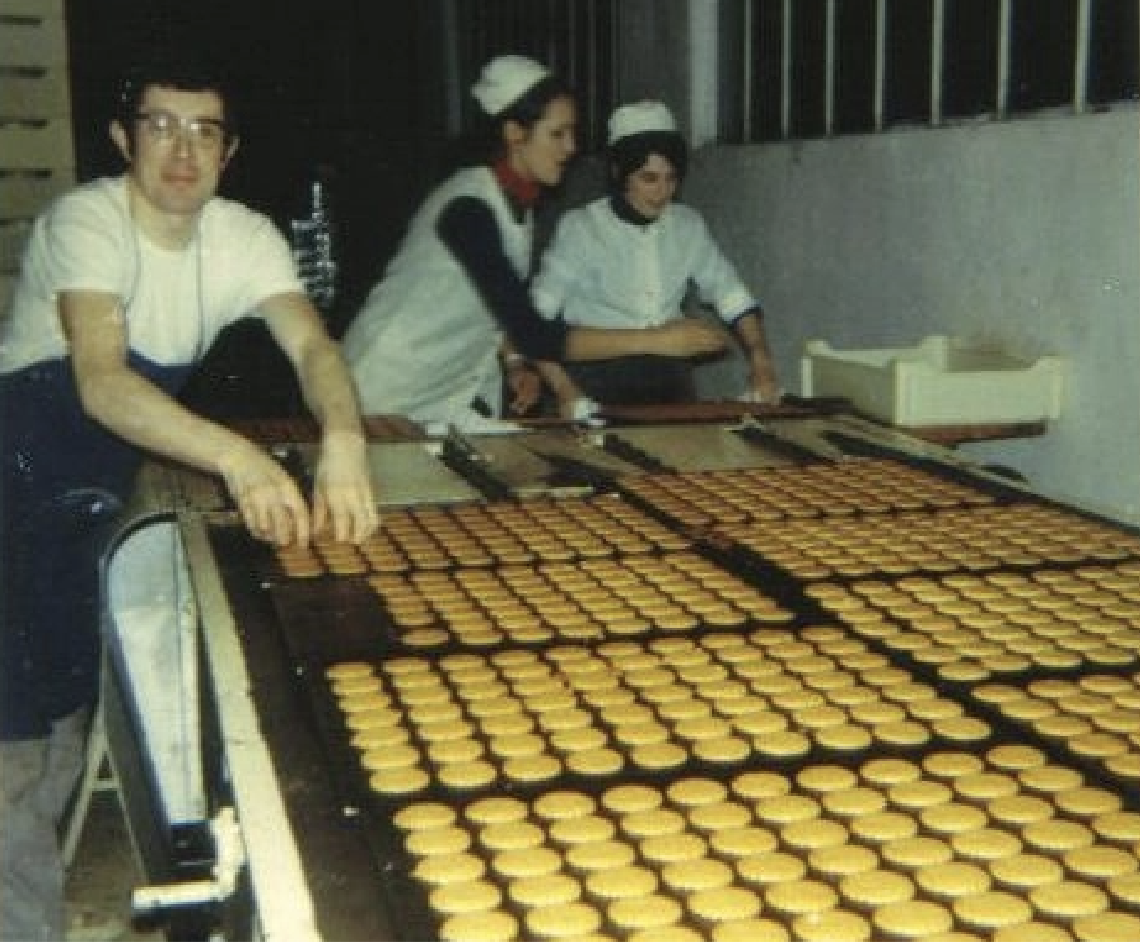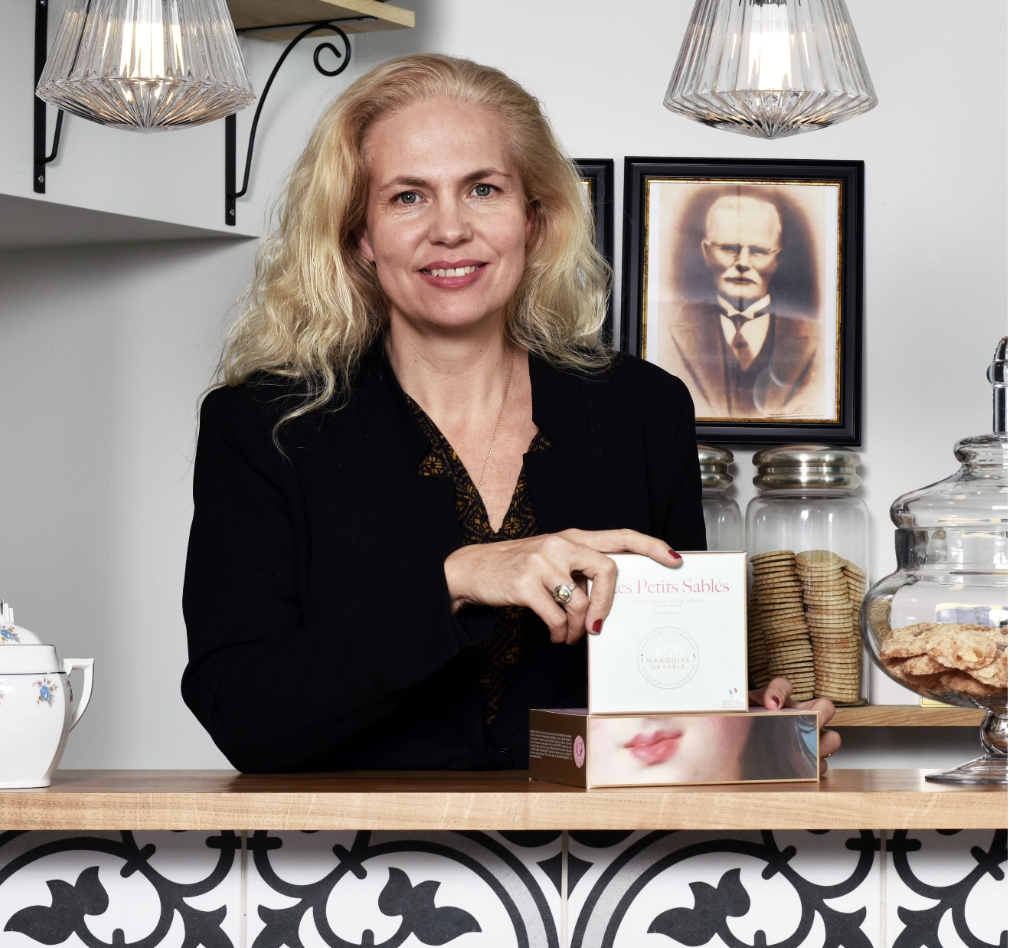
Our history since 1670
The origins of Petit Sablé
The recipe for Sablé, a pure butter cookie, has been handed down from generation to generation with strong roots in the town whose name it bears, Sablé-sur-Sarthe located in the heart of the Pays de la Loire.
July 1670, Vatel, maître d'hôtel to the Grand Condé, had a multitude of small, dry, round cakes served on trays.
As far back as we go to locate the origin of Petit Sablé, we don't fail to mention a letter Mme de Sévigné addressed to her daughter. Thanks to the Grand Vatel and the Marquise de Sablé, the reputation of the Véritable Sablé, whose recipe is perpetuated by La Sablésienne, is still very much alive.

Love has such a special character, you can't hide it where it is, nor fake it where it isn't.
MARQUISE DE SABLE
At the hotel occupied by the Princes de Condé, every first Monday of the month, it was customary to regale a rather impressive number of guests. On this particular Monday, the first of July 1670, Vatel, maître d'hôtel to the Grand Condé, had a multitude of small, dry, round cakes served on trays, which "Monsieur" (the King's brother) found very convenient and of honest lightness. He ordered them to be brought to him on rising.

This letter from Madame de Sévigné mentions the presence, during this meal, of a guest of honor in the person of Magdeleine de Souvré, Marquise de Sablé. What coincidence was there between the arrival on the princely table of a new kind of dry cake and the presence of Madame de Souvré as guest of honor?
Madeleine de Souvré, Marquise de Sablé (1599-1678), a close friend of the famous La Rochefoucauld, was renowned for her great beauty. She entertained the elite of the precious, and launched the fashion for maxims in her Salons. This is probably where La Rochefoucauld's Maximes were born.

The Marquise de Sablé is the world's greatest gourmand.
She claims that no one has such a fine taste as her.
TALLEMANT DE REAUX

Le Petit Sablé pur beurre de Sablé-sur-Sarthe is listed as part of France's culinary heritage.
In 1989, the French Ministry of Culture launched a research program to list France's culinary heritage. To coordinate this inventory, a structure was created: the Conseil National des Arts Culinaires (CNAC).
A steering committee of "national experts" was set up to list the regional specialties of France's culinary heritage. Twenty-two volumes were published between 1990 and 2003, making up a unique and renowned collection of French gastronomes.
Of course, our recipe for Véritable Sablé de Sablé-sur-Sarthe has been referenced by the CNAC and has its own page in this inventory. It is also referenced in the Larousse Culinaire.
Le Biscuit en Héritage
In this pastry and biscuit-making tradition, it was Amélie Loret Scherrer who took over the Biscuiterie La Sablésienne in 2003. The great-granddaughter of a pastry chef and the daughter of a cookie maker, Amélie discovered the gourmet world of biscuit-making at the age of 6.
Passionate about taste, innovation and creation, at the age of 31 she took up the challenge of taking over La Sablésienne, the Biscuiterie de Sablé, which makes the authentic Petit Sablé from Sablé-sur-Sarthe.
A lover of good and beautiful things, Amélie seeks out forgotten recipes to bring them up to date. Today, she and her team perpetuate the French biscuit-making tradition. She infuses La Sablésienne with its traditional character, with cookies baked on metal plates and picked up by hand.
La Biscuiterie
From the 20th century to the present day, a passionate pastry chef, Georges Justier, built the Biscuiterie de Sablé-sur-Sarthe in 1962. He took great pride in perpetuating the heritage of the many Sablé pastry chefs who, for centuries, had handed down the historic recipe of pure fresh butter from generation to generation.

Each cookie is an alliance between tradition and modernity
The emphasis is on natural ingredients, with no preservatives, artificial colors or flavors. La Sablésienne is committed to sourcing its raw materials mainly from the region. She has also implemented a local work-integration scheme.
Nourished by extensive travel and curious about other cultures, Amélie guides pastry chefs towards original, innovative creations. In this respect, Japan is a country that fascinates her, notably for its art of living around the gift.
The Sablésienne has since opened several boutiques in western France and is currently also opening stores in Asia to offer gourmets the experience of the pleasure of taste...

